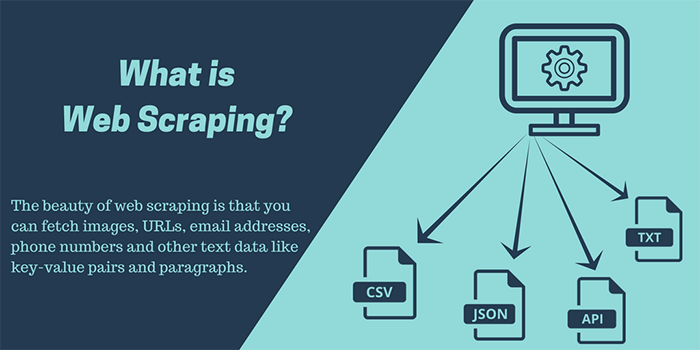
Python has become one of the most popular programming languages for web scraping due to its simplicity, versatility, and the wealth of libraries available. Efficient web scraping with Python involves using a combination of powerful libraries and best practices to collect data from websites in a structured and automated manner. This article explores the key steps and tools for using Python effectively in web Web Scraping Tool scraping, focusing on making the process both efficient and scalable.
The first step in web scraping with Python is to choose the right libraries. Two of the most widely used libraries for web scraping are Requests and BeautifulSoup. The Requests library is used for sending HTTP requests to a website and retrieving the HTML content. It provides a simple interface for interacting with web pages, handling things like cookies, headers, and redirection. Once the HTML content is retrieved, BeautifulSoup is used to parse the data and extract the required information. BeautifulSoup allows you to navigate the HTML structure, search for specific tags or classes, and extract text or attributes from elements efficiently. For more complex tasks, the Selenium library can be used to automate interactions with dynamic websites that require user input or involve JavaScript rendering.
Efficient scraping also involves handling large volumes of data with care. For large-scale scraping tasks, Python’s Scrapy framework offers a powerful solution. Scrapy is designed for speed and scalability, allowing you to write spiders (scraping bots) that can traverse multiple web pages, handle complex data extraction logic, and export the data in formats like CSV, JSON, or databases. It comes with built-in features such as automatic handling of request delays, retries, and user-agent rotations, which help prevent scraping from being blocked or throttled by websites. Scrapy’s asynchronous nature also means it can process multiple pages simultaneously, making it much faster than traditional scraping methods.
A crucial aspect of efficient web scraping is managing requests and avoiding detection by websites. Web scraping often involves sending multiple requests to a website in a short period of time, which can trigger anti-scraping mechanisms such as IP blocking or CAPTCHA challenges. To avoid these issues, you can implement techniques like request rate limiting and IP rotation. Python libraries such as random and time can be used to add random delays between requests, simulating human browsing behavior. Additionally, services like ProxyMesh or ScraperAPI can be used to rotate IP addresses, allowing you to distribute requests across different proxies to reduce the likelihood of being blocked.
Once data is successfully scraped, the next challenge is to clean and store it in a usable format. Raw data from websites often contains unwanted elements, such as HTML tags or irrelevant information. Python provides several libraries for cleaning and processing data, including pandas and NumPy. Pandas, in particular, is widely used for data manipulation, allowing you to easily transform, filter, and clean the scraped data. After cleaning, the data can be stored in various formats such as CSV files, databases, or even cloud storage solutions. Using Python, you can automate the entire scraping pipeline, from data extraction to processing and storage, making the process much more efficient.
Lastly, maintaining ethical and legal standards is critical when using Python for web scraping. It’s important to respect a website’s robots.txt file, which specifies which parts of the site can or cannot be scraped. Moreover, you should be mindful of the website’s terms of service and the privacy rights of users. Implementing throttling mechanisms to avoid overwhelming the server and using scraping techniques that minimize your impact on the website’s performance are good practices. Additionally, being transparent about the data you scrape and how it will be used can help ensure that you are following ethical guidelines and legal regulations.
In conclusion, Python offers a robust set of tools and techniques for web scraping that can be used to build efficient and scalable scraping projects. By leveraging libraries like Requests, BeautifulSoup, Scrapy, and Selenium, along with proper request management and data cleaning strategies, Python developers can create powerful scraping solutions. However, ethical and legal considerations should always be kept in mind to ensure that web scraping is done responsibly and within the boundaries of the law.
